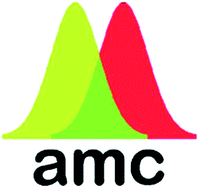The “Phase-of-the-Moon” paradox in uncertainty estimation
Abstract
In chemical measurement, many extraneous influences affect the magnitude of an analytical signal and thereby contribute to the uncertainty of the result. Some of these influences are predictable: others can be quite unexpected, the weather for example. Atomic spectrometry can be affected by gusts of wind that cause pressure changes in the fume extraction system. That makes the flame or plasma move relative to the instrument optics. There are tales of a spectrography laboratory where precision was degraded on the mornings when cleaners had applied a wax polish to the floor. The solvent of the polish contained enough UV-absorbing compounds to attenuate the light transmission in air-path spectrometers. But the phase of the Moon is predictable and any conceivable effect it could have on measurement uncertainty can be derived from physics.

- This article is part of the themed collection: Analytical Methods Committee Technical Briefs

 Please wait while we load your content...
Please wait while we load your content...